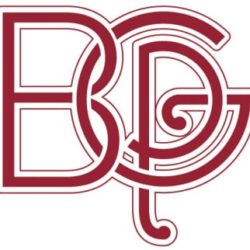Philosophy
It all began when Justin Onclin, aware of the potential of his terroir, bought Château Branas Grand Poujeaux in 2002.
He then had a double ambition: to respect the heritage and roots of this estate, while giving it a visionary impetus and a new appetite.
The main international wine journalists see Château Branas Grand Poujeaux as the quality leader of the insider appellation Moulis-en-Médoc. This smallest communal Médoc appellation can rival in quality with the most expensive Médoc wines due to the splendid terroir of the Grand Poujeaux plateau. Neal Martin of Vinous: “Château Branas Grand Poujeaux is flying on Grand Cru Classé level since many vintages”.
The majority of the vineyard plots are located on the Grand Poujeaux plateau, a plateau composed of various gravelly sediments deposited millions of years ago during the Günz Ice Age. This ancient gravel plateau, combined with a highly specific Atlantic oceanic climate, is the source of the world-famous Médoc wines. The Grand Poujeaux plateau is terrace number 3, a gravel vain that starts in the north in the vineyard of Château Mouton Rothschild and ends in the south in the vineyards of Margaux.
Château Branas Grand Poujeaux was purchased in 2002 by Justin Onclin and since then the quality has improved vintage after vintage. Today, Château Branas Grand Poujeaux is a wine estate with 25 hectares of vines divided into 25 blocks. Each block is vinified separately, allowing the specific terroir of each vineyard to be valued. The ambition of the vineyard and cellar team is to produce a highly complex blend of Merlot, Cabernet Sauvignon and Petit Verdot in the most ecological and sustainable way possible. The wine is made by an ambitious team headed by Arjen Pen, who is a winemaker since 2005 in Bordeaux and South Africa. Since 2012, Hubert de Boüard, co-owner of Château Angélus has been working alongside Branas Grand Poujeaux, which he himself designates as being among the best terroirs in the Medoc.
The wines of Branas Grand Poujeaux are aged in small barrels of 225 litres and in amphoras of 750 litres for 16 months before bottling. Amphora aging represents maximum 10% of the production and 50% of the barrels are renewed each year, the other 50% is one year old.
